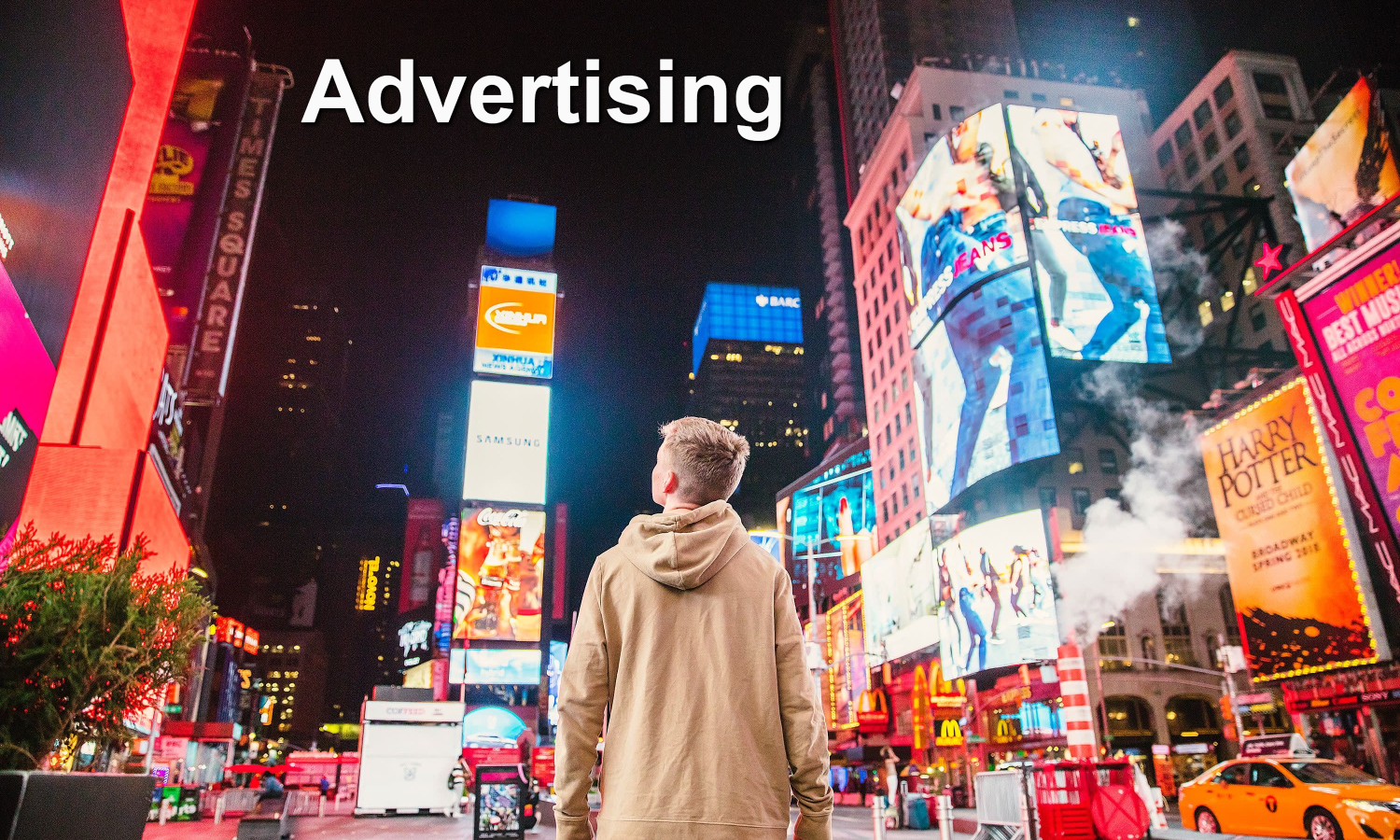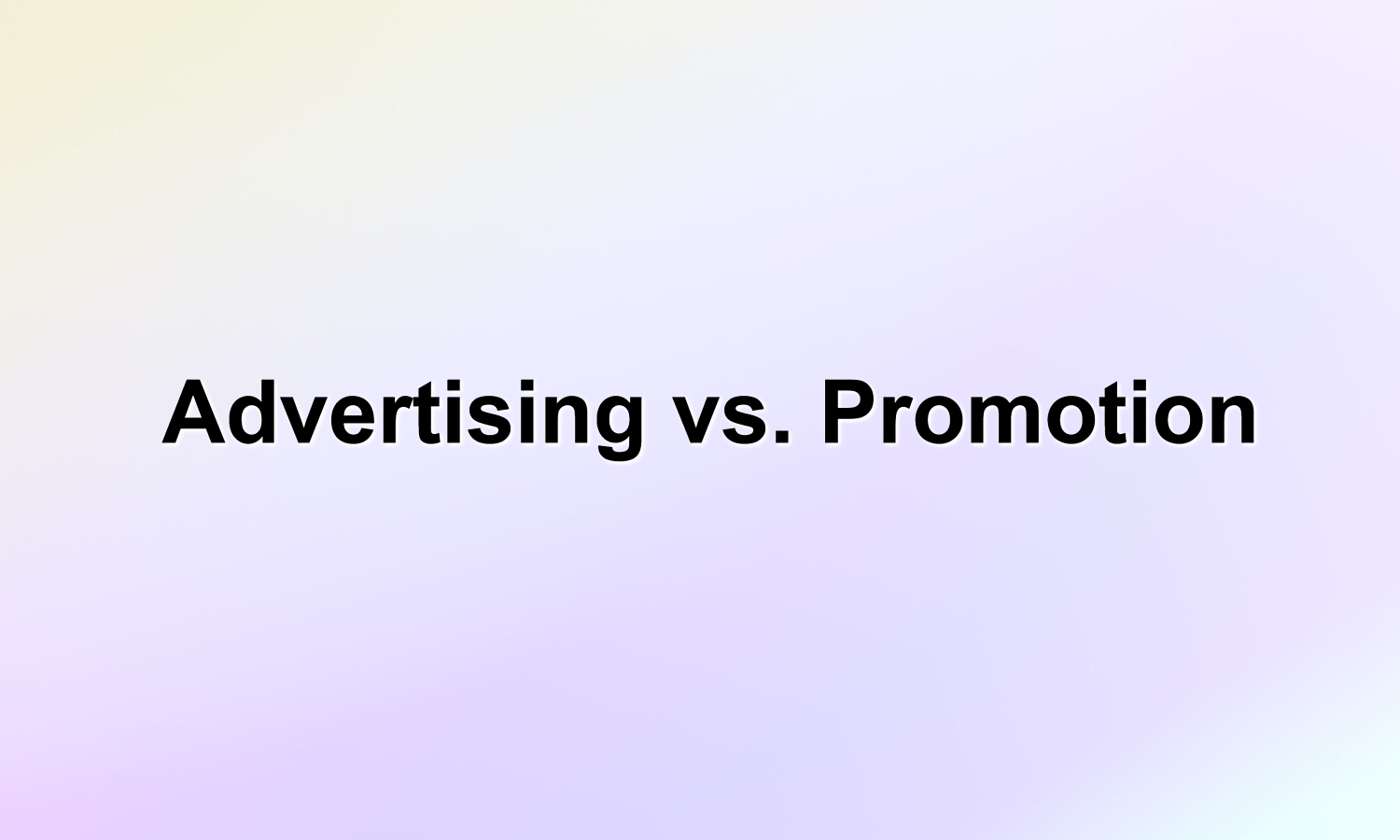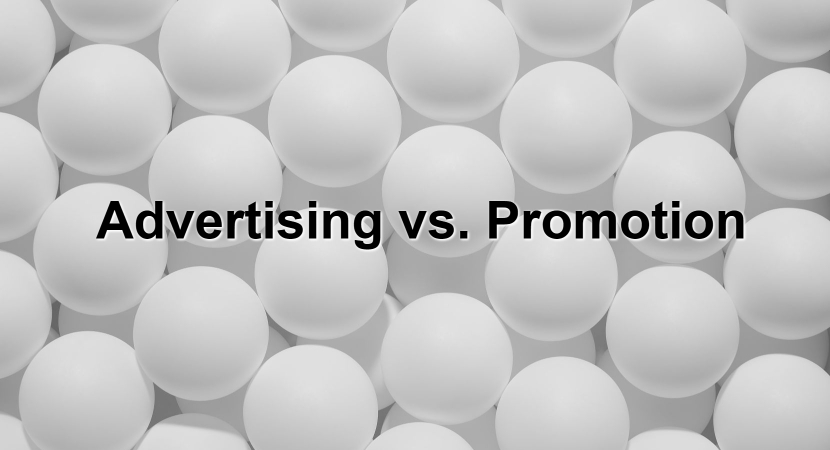Advertising and promotion are the tools that help a business or an organization increase its sales and reach out to its targeted customers. Advertising means creating awareness and bringing interest in products or services by communicating with the target audience. In comparison, promotion refers to communicating with customers and persuading them to buy or use a service.
Both these tools are helpful for you to uplift your business to touch immense heights. Advertising helps you in creating awareness about your brand among the customers. And promotion helps to increase sales by providing incentives for the buyers to make purchases by offering free samples, discounts, etc. Although both tools help your business, you must understand when to use which tool. For this, you should read this article.
In the article, you will understand the differences between the two and comparison between them, i.e., advertising vs. promotion. And depending on that, you can take knowledgeable actions. So, let’s take a plunge in the article and begin discovering it.
Introduction To Advertising
Advertising is a vital component of a business’s marketing approach. It involves using different communication channels to promote a business’s services and products.

The primary purpose of advertising is to captivate new customers by showcasing how a particular product or service can meet their needs. Twelve top advertising agencies in the US have built a reputation for their innovative and effective advertising campaigns.
Types Of Advertising
Businesses can utilize different types of advertising depending on their budget and target audience. Types of advertising include:-
Print Advertising
It involves advertising through billboards, newspaper ads, magazine ads, etc. It can target a specific group of audiences depending on the publication type or location it is placed in. However, with the rise of digital media, it has become less effective in reaching large audience groups.
Television Advertising
With this, you can reach out to a spacious audience at once. Advertisers have access to various channels catering services to different demographic locations. But in this form of advertising, you can face high costs for airtime and production.
Radio Advertising
It allows businesses to reach listeners who are getting about and working while listening to the radio. Audio advertisements that include catchy and memorable slogans tend to attract more customers.
Online Advertising
With online advertising, businesses get a wide range of options, such as website banner ads, social media campaigns, etc., targeting specific demographics. Also, it helps the company directly measure its effectiveness.
Outdoor Advertising
It involves billboards along roadsides and highways that include eye-catching graphics with some text, such as phone number, address, etc. With this, businesses can effectively promote their offerings more than their competitors.
Objectives Of Advertising
The primary objectives of advertising include the following:-
Increasing Brand Awareness
The primary objective of advertising is to increase brand awareness, i.e., making people aware of your brand, what it is, and the products and services it offers. By doing so, businesses can increase their market share by attracting new customers who may have yet to learn about your brand beforehand.
Creating Interest And Desire
Effective ads may develop curiosity among the customers by highlighting the products’ unique features and what makes them stand out from their competitors. Once a customer piques interest in the product or service, he is likely to develop a desire for it and can make a purchase.
Driving Sales And Revenue
It is the ultimate goal of the advertising campaigns. It helps convert prospects into paying customers by educating them about the need to prefer your brand’s product or service over brands of the market.
Benefits And Drawbacks Of Advertising
There are several benefits and drawbacks to using advertising. Given below are a few of them:-
Benefits:-
The benefits of advertising include:-
- Improves the goodwill of a business or organization
- An easy and quick way to demonstrate a company’s product or service
- Encourages the consumers to make intellectual decisions
- Helps in market expansion
- Removes mediators and stabilizes the sales volume
- Increases brand and product awareness
- Sets the brand and its product and services ahead of the competitors, etc.
Drawbacks:-
Although advertising has various benefits, it has several drawbacks too. The disadvantages include the following:-
- Persuades people to buy products whether they need them or not
- Adds up costs to the marketing campaigns
- Unguaranteed results
- Mislead the consumers with untrue and exaggerated claims
- Some advertisements encourage the sale of inferior products, etc.
Outdoor billboards, transit ads, and digital signage are examples of out-of-home advertising (OOH) mediums that brands can leverage to reach consumers on the go.
Introduction To Promotion
Businesses use this marketing technique to contact customers and induce them to buy or use your product and services.

It involves creating and distributing promotional materials, such as vouchers, coupons, brochures, flyers, etc. One can promote through different channels and activities.
Types Of Promotion
A business can adopt different types of promotion depending on its requirements. Other types of promotion include:-
Sales Promotion
In this, businesses offer different incentives, such as buy one get one free offer, free samples, discounts, coupons, etc., to encourage customers to make purchases. Generally, it is for the short term, and its ultimate goal is to enable immediate sales.
Public Relations Promotion
In this, the business undertakes activities to maintain a positive image and goodwill among the public. The activities include media events, sponsorships, press releases, etc.
Personal Selling Promotion
It involves direct face-to-face communication between the seller and the buyer. This promotion type effectively develops relationships with customers and tailors the message to customers’ needs.
Direct Marketing Promotion
This promotion type involves direct customer communication through messages, emails, or telephones. It effectively introduces new products or services to customers and builds customer loyalty.
Objectives Of Promotion
As there is some objective behind every activity, similarly, the promotion also has some objectives, which are:-
Stimulating Immediate Sales
The primary objective of promotion is to brace quick sales. Businesses can encourage customers to purchase by offering free samples, discounts, coupons, etc.
Building Customer Loyalty
By offering rewards like loyalty programs, businesses can stimulate consumers to return and make repetitive purchases, which helps them build customer loyalty.
Introducing New Products or Services
Another objective of promotion is to introduce a business’s newly launched services or products to the customers. With good advertising, they can also inspire customers to try new products or services of their brand.
Benefits And Drawbacks Of Promotion
Below are the several benefits and drawbacks of promotion that every business should consider.
Benefits:-
The benefits of promotion include:-
- Helps in increasing sales
- Improves customer reliance on their brand
- Leverages brand awareness
- Create positive perceptions of the business among customers, etc.
Drawbacks:-
A few drawbacks of using promotion are:-
- Decreases profitability, mainly if the promotion is not well targeted
- It may harm the brand’s reputation if customers perceive the promotion as cheap or low quality
- Irrelevant promotions may break the business’s relationship with its customers, etc.
Advertising vs. Promotion: Key Differences
Now that you are clear with the meaning and other aspects of advertising and promotion, it’s time to compare and understand the differences between the two, i.e., advertising vs. promotion.

| Basis Of Difference | Advertising | Promotion |
|---|---|---|
| Communication Channels | Advertising uses one-way communication channels, such as radio, billboards, television, etc., to reach a wider audience. | It uses two-way communication channels, such as direct marketing, personal selling, etc., to interact directly with the customers. |
| Timing and Duration | It is a long-term strategy | On the other hand, promotion is a short-term strategy |
| Objectives and Goals | The primary goal is to develop consumers' awareness and interest in a service or product. | Its primary goal is to stimulate immediate sales. |
| Cost Considerations | It is more expensive than promotion, mainly if it involves radio or television advertising. | Promotion is less expensive, especially for personal selling or direct marketing. |
Synergies And Benefits Of Unifying Promotion And Advertising
After comparing the two, i.e., advertising vs. promotion, let’s know the benefits of integrating them. Although advertising and promotion are two different concepts and ways of marketing a business, combining them can result in significant benefits. A few benefits of incorporating them are:-
- Companies can build trust with their targeted customers by integrating advertising and promotion
- Help to increase your efficiency and consolidate the process
- Results in saving time and cost
- Increases sales by reducing buyers’ confusion about products and services
- Help businesses create a consistent message and reach customers through multiple channels
- Leverages brand image and maximizes ROI, etc.
Fruitful Integrated Marketing Campaigns Examples
There are various successful integrated marketing campaigns, and one of the most noteworthy examples is General Electric’s rebranding campaigns. It has modernized its 24-year-old advertising slogan, “We bring good things to life,” to “Imagination At Work,” which delivers a clear and consistent message of the brand.
One more example is the Coca-Cola company’s campaign, “Share A Coke.” It allowed the customers to personalize their Coke bottles by replacing the brand’s logo with the individual’s name. Through the campaigns, the sales of the company increased by 2%. Other than these two, there are a variety of other examples, including the in-store experience campaign of Apple, the Shocking Data strategy of Intermedia, and various others.
FAQs
What are the similarities between advertising and promotion?
The similarities include the following:- 1.Both focus on developing a profitable sales strategy 2.Promotes the products and services of the company 3.Advertising and promotion help build customer loyalty and leverage the company's goodwill.
What are the types of advertising?
The different types of advertising include Online, Print, Outdoor, Radio, and Television advertising.
Advertising vs. Promotion: Which one is best?
However, both advertising and promotion are the best tools for a company's marketing strategy; it depends on you to choose the right one. You can determine the best for you depending on your business's requisites and budget.
Conclusion
Hopefully, after reading the article, you have understood how vital advertising and promotion tools are for any business’s success. Also, comprehending the difference, i.e., advertising vs. promotion, you know which tools to use and when. By acknowledging all these, you can easily make conversant decisions. However, if you integrate both devices, you will get excellent benefits.
See also: Importance of digital marketing

